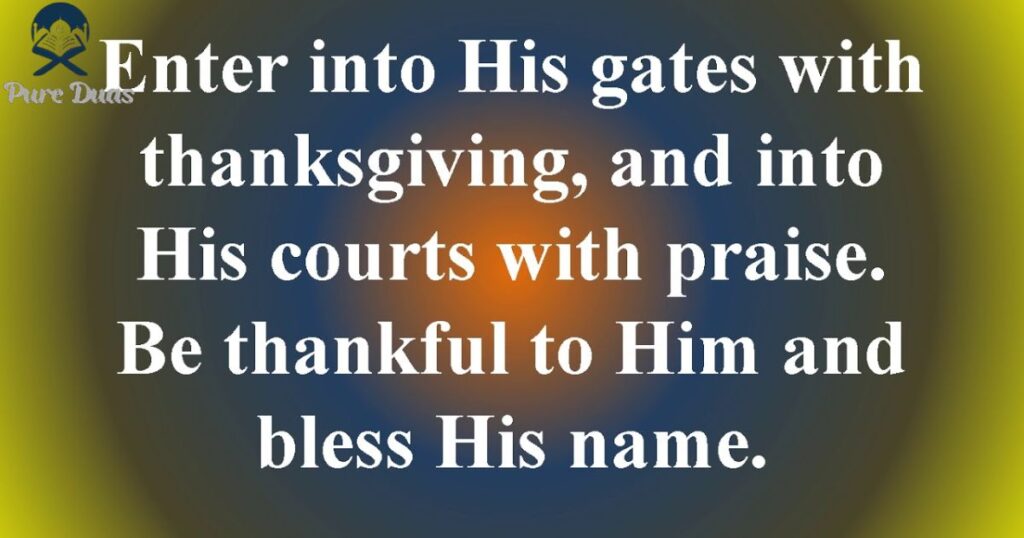Picture this: your congregation walks in carrying the weight of their week. Stress clings to them like morning fog. Then you open with Scripture ,and everything shifts. The atmosphere changes. Hearts soften. God’s presence fills the room. That is the trans-formative power of opening a worship service with Scripture. It is not just tradition; it is an invitation.
When you begin with the Word of God, you are essentially rolling out the red carpet for divine encounter. Your congregation needs this moment. They crave it, even if they do not realize it. The Bible passage you choose becomes the gateway through which weary souls enter into rest and celebration. Throughout this guide, you will discover practical steps for selecting and delivering Scripture that resonates.
We will explore five essential techniques that prepare hearts for worship. You will find real examples with reflections and prayers ready to use. Whether you are a seasoned worship leader or stepping into this role for the first time, these insights will equip you to invite God’s presence powerfully and authentically.
How to Open a Worship Service with Scripture

Starting your worship service with Scripture requires intentionality. The difference between reading words and creating sacred space lies in preparation and heart posture.Think of Scripture as the foundation everything else builds upon. Your songs, prayers, and sermon all flow from this initial moment.
Choose Scripture that Aligns with the Theme
Your Bible passage selection matters more than you might think. Random verses rarely create cohesive experiences. Instead, you need strategic alignment. Start by identifying your service’s core message. Are you celebrating God’s faithfulness? Exploring themes of redemption? Addressing community struggles? Your Scripture should echo and amplify whatever your sermon series emphasizes.
The church calendar provides excellent guidance here. During Advent, prophecies about Christ’s coming create anticipation. Easter Sunday demands resurrection passages that overflow with victory. Ordinary Sundays might focus on discipleship, grace, or worship itself.
Consider your congregation’s current journey too. Churches walking through difficult seasons need comfort passages like Psalm 23 or Isaiah 40. Communities experiencing growth and blessing respond powerfully to thanksgiving Scriptures.
Here’s a practical framework:
- Praise-focused services: Psalms 95-100, 145-150
- Comfort themes: Isaiah 40, Matthew 11:28-30, Psalm 46
- Repentance services: Psalm 51, 1 John 1:9, Joel 2:12-13
- Mission emphasis: Matthew 28:18-20, Acts 1:8, Isaiah 6:8
Do not overlook shorter passages. Sometimes three powerful verses accomplish more than lengthy chapters. Quality beats quantity every single time.Fresh Scripture selections keep your worship gathering vibrant. While familiar passages comfort, new discoveries excite. Strike balance between both.
Be Mindful of the Tone

Tone shapes everything. The same Scripture passage can land differently based on delivery approach.Celebratory services demand energetic Scripture choices. Psalm 100 practically explodes with joy. “Shout for joy to the Lord, all the earth!” That’s not whisper-appropriate material.
When you are marking victories, answered prayers, or simply celebrating God’s greatness, your passage should reflect exuberance.Contrast that with memorial services or prayer gatherings. Solemn occasions require different selections. Isaiah 40 speaks gently to weariness. Its tone acknowledges struggle while offering hope.
Match your Scripture’s emotional register to the moment:
| Service Type | Appropriate Tone | Scripture Examples |
| Celebration | Joyful, triumphant | Psalm 100, Isaiah 61:10-11 |
| Reflective | Contemplative, gentle | Psalm 23, Lamentations 3:22-23 |
| Intercession | Earnest, hopeful | James 5:16, 1 Timothy 2:1-4 |
| Communion | Reverent, intimate | 1 Corinthians 11:23-26, John 15:1-5 |
Your congregation’s hearts and minds need congruence. When tone matches content matches moment, something powerful happens. Dissonance creates confusion. Harmony creates worship.Sometimes you will lead services addressing cultural tensions or tragedies. These demand careful Scripture selection. Acknowledge reality without drowning in despair. Point toward God’s presence without minimizing pain.
Deliver the Passage with Reverence
How you read matters as much as what you read. Your delivery either amplifies Scripture’s power or diminishes it. Slow down. This is not a race. Most worship leaders read too quickly, nervous energy accelerating their pace. Fight that impulse.
Pause between verses. Let silence do its work. Those gaps allow the Word of God to penetrate beyond ears into hearts.Make eye contact periodically. You are not performing; you’re sharing. Connection with people enhances connection with Scripture.
Voice modulation adds dimension without theatrics. Emphasize key phrases naturally. Let your tone reflect meaning. When Scripture expresses joy, your voice should carry it.Practice beforehand, always. Read your selected passage aloud multiple times before Sunday. Notice where you stumble. Mark natural breathing points.
Key delivery principles:
- Read 30% slower than feels natural
- Pause for 2-3 seconds between major thoughts
- Maintain posture that conveys respect
- Project clearly without shouting
- Let emotion emerge authentically
You are stewarding sacred text. This responsibility should humble and embolden you simultaneously. Deliver with reverence and trust the Spirit to do the rest.
Add a Short Reflection (Optional)
A brief reflection bridges Scripture and worship beautifully. But brevity remains crucial.Limit yourself to 60-90 seconds maximum. State one clear thought that links the passage to your service theme.
Perhaps you have selected Isaiah 40:28-31. Your reflection might acknowledge the weariness many carry: “This week beat some of you down. Isaiah reminds us God does not tire. He renews those who hope in Him.”
Effective reflection components:
- Relevance: Connect Scripture to congregation’s life
- Brevity: One clear idea only
- Invitation: Open door for personal application
- Transition: Lead naturally into next element
Personal stories work when kept short. Just do not ramble.Sometimes skip reflection entirely. Let Scripture speak solo. This works especially well with familiar passages.When you do include reflection, write key points beforehand. Prepared thoughts stay focused and powerful.
Prayer (Optional)
Prayer seals your Scripture reading while launching your congregation into worship.
Keep prayers conversational and inclusive. Use “we” language that brings everyone along. “Father, we gather hungry for Your presence…”Your prayer can echo Scripture themes directly. After reading Psalm 100, you might pray: “Lord, we come with thanksgiving today. Your goodness surrounds us. Help us worship with joy.”Match prayer length to your overall service flow. Sixty seconds often suffices.
Prayer types that work well:
- Invocation: Welcoming God’s presence specifically
- Preparation: Asking hearts to be receptive
- Application: Connecting Scripture to daily life
- Transition: Moving from Word into worship expression
Include space for corporate “Amen.” This vocal agreement matters. Your congregation joins you in prayer audibly.
Occasionally, invite silent prayer instead. After reading Matthew 11:28-30, you might say: “Take thirty seconds. Bring your burdens to Jesus silently right now.”
Examples of Scripture for Opening a Worship Service

Real examples help more than theory. Here are three powerful passages you can use immediately, each with reflection and prayer included.
Psalm 100:1-5
“Shout for joy to the Lord, all the earth. Worship the Lord with gladness; come before him with joyful songs. Know that the Lord is God. It is he who made us, and we are his; we are his people, the sheep of his pasture. Enter his gates with thanksgiving and his courts with praise; give thanks to him and praise his name. For the Lord is good and his love endures forever; his faithfulness continues through all generations.”
When to use: This passage works perfectly for celebration services, thanksgiving themes, or any gathering emphasizing joy and gratitude.The Psalmist does not suggest worship, he commands it. “Shout for joy” leaves no room for halfhearted participation.
Notice the identity affirmation: “We are his people, the sheep of his pasture.” Your church family belongs to God. That membership changes everything about how you worship.The passage builds beautifully. It moves from invitation to declaration to instruction. First, we are called to joy. Then we are reminded of who we are. Finally, we are told how to enter, with thanksgiving and praise.
Reflection: “God’s gates don’t require perfect people, just grateful ones. We enter with thanksgiving because His goodness never expires. His love does not depend on our performance. As we worship today, let us focus on His greatness, not our inadequacy.”
Prayer: “Father, You have given us every reason to celebrate. Your love does not quit. Your faithfulness spans generations, including ours. We come before You now with thanksgiving flooding our hearts. Meet us here as we worship Your name. Amen.”
Isaiah 40:28-31
“Do you not know? Have you not heard? The Lord is the everlasting God, the Creator of the ends of the earth. He will not grow tired or weary, and his understanding no one can fathom. He gives strength to the weary and increases the power of the weak. Even youths grow tired and weary, and young men stumble and fall; but those who hope in the Lord will renew their strength. They will soar on wings like eagles; they will run and not grow weary, they will walk and not faint.”
When to use: Choose this passage during seasons of exhaustion, challenge, or when your church faces difficulties.Isaiah addresses discouraged people. They felt forgotten and overwhelmed. Your congregation likely includes folks barely holding on. This Scripture meets them exactly where they live.
The promise here is not instant elimination of problems. It renewed strength for the journey. God does not always remove our mountains, but He consistently renews climbers tackling them.That eagle imagery resonates powerfully. Eagles do not flap frantically. They soar on thermal currents, exerting minimal effort while achieving maximum altitude. Similarly, those who hope in God find grace sufficient for each challenge.
Reflection: “Some of you limped in here today. Life’s been brutal. Isaiah says even young, strong people grow tired. Weakness isn’t failure, it is human. But listen: God specializes in renewing our spirits. He does not tire. As we worship, tap into His endless supply.”
Prayer: “Everlasting God, we need Your strength right now. Our tanks register empty. Renew us as only You can. Help us soar today, not through our power, but Yours. We place our hope completely in You. Amen.”
Matthew 11:28-30
“Come to me, all you who are weary and burdened, and I will give you rest. Take my yoke upon you and learn from me, for I am gentle and humble in heart, and you will find rest for your souls. For my yoke is easy and my burden is light.”
When to use: This passage works wonderfully for services emphasizing rest, peace, or relief from stress.
Jesus issues the gentlest invitation imaginable here. “Come to me.” Not “Get your act together first.” Just come. Exhausted? Come anyway. Burdened? Bring it all.The yoke metaphor connects beautifully. Yokes distribute weight across stronger shoulders. Jesus doesn’t demand we carry life alone. He partners with us, bearing the heavy side Himself.
Notice Jesus describes Himself as “gentle and humble in heart.” Many Christians fear approaching God with their struggles. This verse destroys that hesitation.Rest for souls differs from physical rest. Bodies need sleep. Souls need peace. Jesus provides the latter even when circumstances prevent the former.
Reflection: “Jesus does not add to your load, He lightens it. Whatever burdens you carried in here, lay them down now. This service is your permission to find rest in His presence. Stop striving. Start receiving.”
Prayer: “Lord Jesus, we accept Your invitation right now. We bring our burdens, all of them. We trade our heavy yokes for Yours. Teach us your gentle way. Give us the rest we desperately need. Thank You for welcoming us exactly as we are. Amen.”
Closing Thoughts
Opening your church service with Scripture transforms everything that follows. You’re not just following liturgical tradition. You’re creating space for divine encounter. The Bible passage you select and how you present it determines whether people merely attend or truly engage.
Flexibility matters here. These guidelines provide structure, not stricture. Adapt them to your context. A high-church liturgical service requires different delivery than a contemporary gathering. Both can effectively center the congregation’s hearts on God.Experiment with various passages. Track which ones resonate deeply. Notice patterns. Your congregation might respond especially well to prophetic passages or prefer Jesus’ teachings.
Trust the Holy Spirit’s guidance throughout this process. Sometimes He will prompt unexpected Scripture choices. Follow those nudges.The impact of Scripture-centered openings extends far beyond those initial moments. Seeds planted then bear fruit throughout the week. People remember. They meditate. They apply.
Read Related Blog: Impactful Short Devotions for Prayer Meetings
Conclusion
Starting worship services with Scripture is not a complicated ritual, it is strategic spiritual practice. You have now got five practical steps ensuring your Scripture openings connect powerfully. Choose thematically aligned passages. Match tone to occasion. Deliver with reverence and intentionality. Add brief reflections when helpful. Seal everything with focused prayer. The examples provided give you immediate starting points. Psalm 100 celebrates joyfully. Isaiah 40 encourages the weary.
Matthew 11 invites rest. Each passage, properly presented, creates an atmosphere where God’s presence manifests tangibly. Your congregation needs these moments desperately. They arrive distracted, burdened, scattered. Scripture focus brings unity and clarity. Don’t underestimate this practice’s power. Start implementing these techniques next Sunday. Watch how your worship gatherings transform when anchored firmly in Scripture.
Frequently Asked Questions
How long should the opening Scripture reading be?
Keep readings between three to ten verses typically. Brevity maintains focus while providing substance. Longer passages work for reflective services, but shorter selections usually serve better.
Should I always include a reflection after reading Scripture?
No, reflections remain optional. Sometimes Scripture speaks powerfully alone. Include brief commentary only when it enhances understanding and worship preparation without creating delays.
Can I use multiple Scripture passages to open worship?
Yes, but limit yourself to two or three maximum. Ensure passages connect thematically. Too many readings overwhelm rather than focus. Cohesion matters more than quantity.
What if I am nervous about reading Scripture aloud?
Practice beforehand reduces anxiety significantly. Remember, focus stays on God’s Word, not your performance. Slow down when nervous. Your supportive congregation wants you to succeed.
Should I use a specific Bible translation for worship service?
Use translations your congregation knows and understands. UNIV, ESV, and NKJV work well. Consistency builds familiarity. Prioritise clarity over tradition. Match your church’s typical Bible version.
